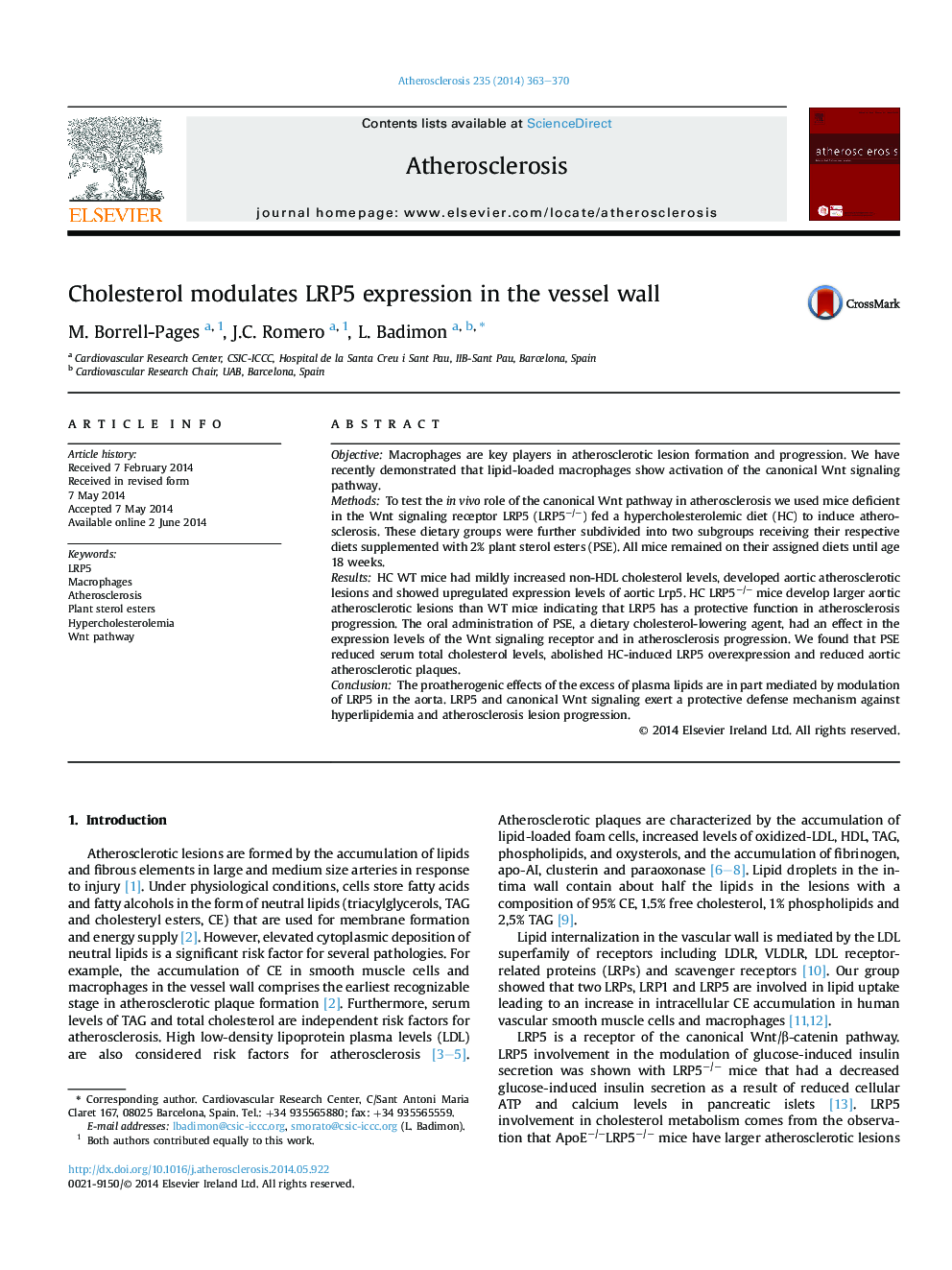| کد مقاله | کد نشریه | سال انتشار | مقاله انگلیسی | نسخه تمام متن |
|---|---|---|---|---|
| 5946069 | 1172357 | 2014 | 8 صفحه PDF | دانلود رایگان |

- LRP5â/â mice fed a HC diet show higher serum cholesterol levels than their WT littermates.
- LRP5 is required for cholesterol regulation.
- LRP5â/â mice develop larger aortic lesions than WT mice indicating a protective role for LRP5 in atherosclerosis progression.
- PSE reduce serum cholesterol levels, abolish HC-induced LRP5 overexpression and reduce aortic atherosclerotic plaques.
- Therefore, LRP5 is a candidate target gene for the development of future drugs for atherosclerosis treatment.
ObjectiveMacrophages are key players in atherosclerotic lesion formation and progression. We have recently demonstrated that lipid-loaded macrophages show activation of the canonical Wnt signaling pathway.MethodsTo test the in vivo role of the canonical Wnt pathway in atherosclerosis we used mice deficient in the Wnt signaling receptor LRP5 (LRP5â/â) fed a hypercholesterolemic diet (HC) to induce atherosclerosis. These dietary groups were further subdivided into two subgroups receiving their respective diets supplemented with 2% plant sterol esters (PSE). All mice remained on their assigned diets until age 18 weeks.ResultsHC WT mice had mildly increased non-HDL cholesterol levels, developed aortic atherosclerotic lesions and showed upregulated expression levels of aortic Lrp5. HC LRP5â/â mice develop larger aortic atherosclerotic lesions than WT mice indicating that LRP5 has a protective function in atherosclerosis progression. The oral administration of PSE, a dietary cholesterol-lowering agent, had an effect in the expression levels of the Wnt signaling receptor and in atherosclerosis progression. We found that PSE reduced serum total cholesterol levels, abolished HC-induced LRP5 overexpression and reduced aortic atherosclerotic plaques.ConclusionThe proatherogenic effects of the excess of plasma lipids are in part mediated by modulation of LRP5 in the aorta. LRP5 and canonical Wnt signaling exert a protective defense mechanism against hyperlipidemia and atherosclerosis lesion progression.
Journal: Atherosclerosis - Volume 235, Issue 2, August 2014, Pages 363-370